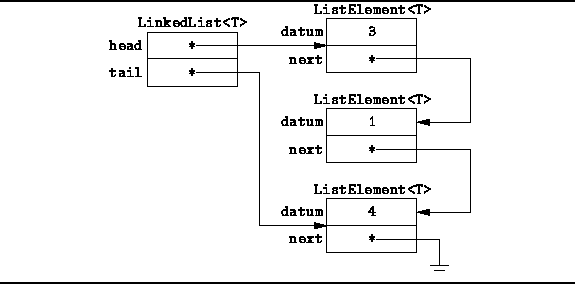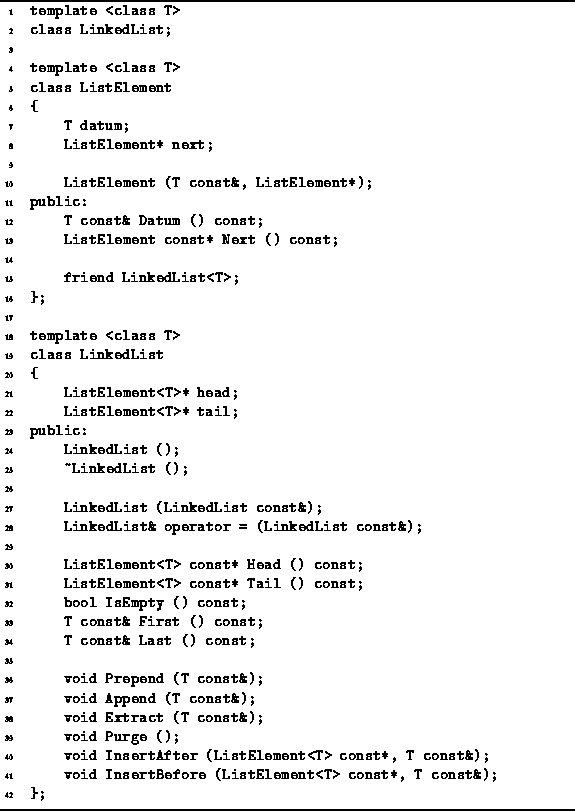Figure ![]() illustrates the
the singly-linked list scheme we have chosen to implement.
Two structures are used.
The elements of the list are represented using a structure
which comprises two fields--datum and next.
The former holds the a single data item;
the latter is a pointer to the next array element.
The main structure also comprises two fields-head and tail.
Which contain pointers to the first and last list elements, respectively.
illustrates the
the singly-linked list scheme we have chosen to implement.
Two structures are used.
The elements of the list are represented using a structure
which comprises two fields--datum and next.
The former holds the a single data item;
the latter is a pointer to the next array element.
The main structure also comprises two fields-head and tail.
Which contain pointers to the first and last list elements, respectively.

Figure: Memory Representation of Linked List Objects
Program ![]() gives the declaration of the
LinkedList<T> and ListElement<T> class templates.
The ListElement<T> class
is used to represent the elements of a linked list.
It has two private member variables,
datum and next,
a private constructor, and two public accessor functions.
gives the declaration of the
LinkedList<T> and ListElement<T> class templates.
The ListElement<T> class
is used to represent the elements of a linked list.
It has two private member variables,
datum and next,
a private constructor, and two public accessor functions.

Program: LinkedList<T> and ListElement<T> Class Definitions
A LinkedList<T> class object has two protected member variables, head and tail, several constructors, a destructor, and various other member functions.
We can calculate the total storage required, S(n),
to hold a linked list of n items
from the class definitions given in Program ![]() as follows:
as follows:

Since LinkedList<T> and ListElement<T>
are generic classes,
we have no a priori knowledge of the amount of storage
used by an object of type T.
However, it is often reasonable to assume that ![]() .
.![]() And since a pointer requires a constant amount of space,
And since a pointer requires a constant amount of space,
![]() .
If we assume that the amount of storage used by an object
of type T is O(1), then S(n)=O(n).
.
If we assume that the amount of storage used by an object
of type T is O(1), then S(n)=O(n).